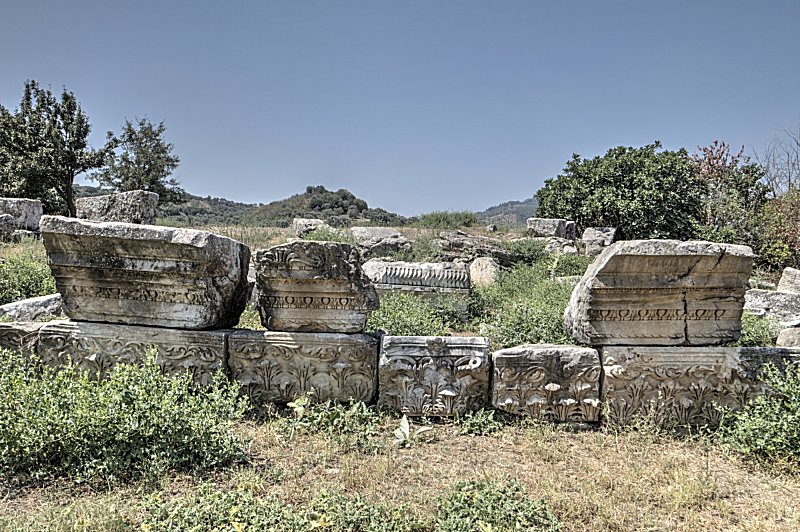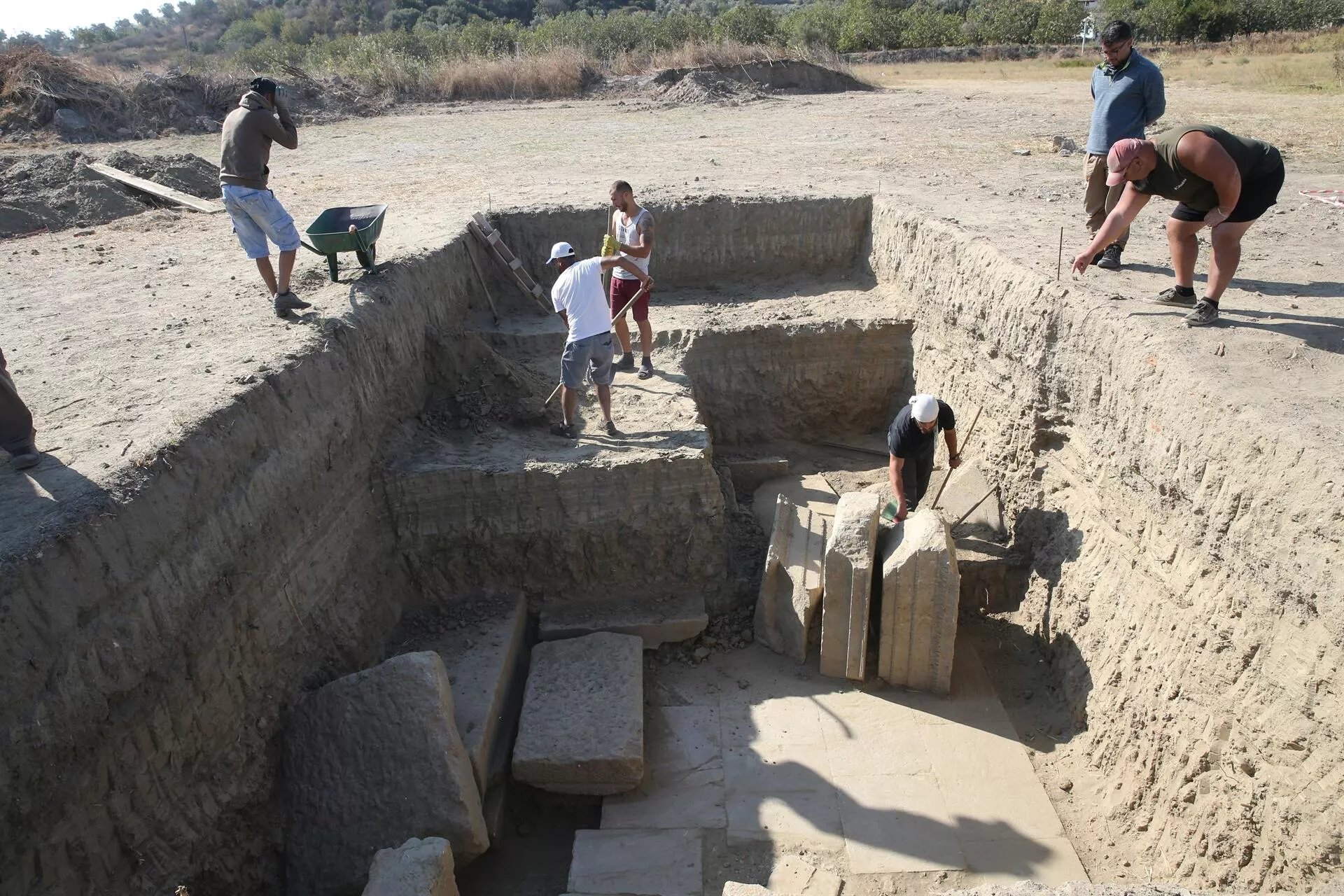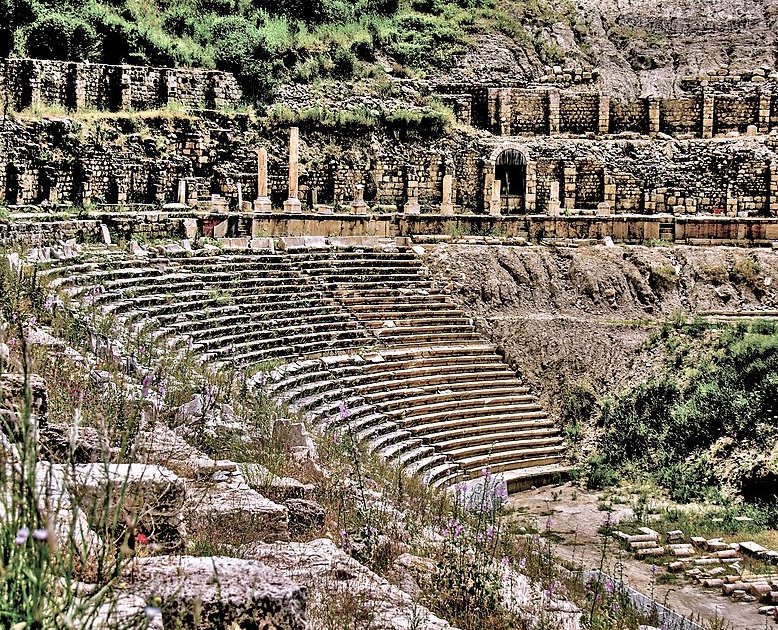Conny Waters – AncientPages.com – Archaeological excavations in the ancient city of Magnesia, located in the western province of Aydın’s Germencik district, have brought to light the entrance gate of the Temple of Magnesia Zeus, the replica of which is on display at the Pergamon Museum in Berlin.
 Magnesia on the Meander. Image source
Magnesia on the Meander. Image source
Excavations in the ancient city of Magnesia in the Ortaklar neighborhood are being carried out under the presidency of ᴀssociate Professor Görkem Kökdemir from Ankara University’s Department of Archaeology.
The Artemis sanctuary, stadium, and theater area have been unearthed so far in the ancient city, which was first excavated by German archaeologists before the Republican era. During the excavations, 80 statues and various items have been found.
Speaking to the state-run Anadolu Agency, Kökdemir said that Magnesia was a leading city in ancient times where religious festivals were held in temples and sanctuaries, writes Hurriyet Daily News.
Stating that the Artemis Festival, one of the most important religious events in that period, was held there, Kökdemir said: “This is a very important city in terms of religion. We can call it the city of ‘gods and goddesses.’ This has been revealed by the works carried out so far. Special sanctuaries were built here for many gods and goddesses.”
Stating that they were very excited about this year’s excavations, Kökdemir said that they started the excavations in an area of 26,000 square meters known as the “religious agora.”

Image source
“We think that the temple we found in this area is a well-known temple in the history of architecture just like the Temple of Artemis, which is the fourth largest temple in Anatolia and also located in Magnesia. This is a temple dedicated to Zeus.
It was excavated by the Germans before the Republican period. Pieces from this temple were taken to Germany and like the Pergamon Zeus Altar, an exact replica of the Magnesia Zeus Temple was made by using parts from the temple, and it is still on display in Berlin Pergamon Museum,” said Kökdemir adding that the researchers reached the entrance gate of the Temple of Zeus
“People from all over the world visit the museum to see this replica. We are now revealing its original location. Our studies so far show that the original architectural parts of the temple are preserved here. Next year, we will reveal the original structure, whose replica is exhibited in the museum in Berlin. It is very important both for the archaeological literature and for the contribution of this place to tourism. So we are very excited.”

The great amphitheater at Magnesia, the best-preserved in the Anatolian region. – Flickr – CC BY-SA 2.0
Noting that their goal is to reveal the entire temple by continuing excavations until the end of the year, Kökdemir said, “The world’s archaeological community will set the eye in this place once we entirely uncover this temple.”
Greek tradition has it that “Magnesia on the Meander was founded by the colonists from the tribe of Magnetes who arrived in Asia Minor from Thessaly. According to Homer, the Magnetes participated in the Trojan War as a part of the Greek troops led by Agamemnon. The name of the tribe originated in the myth about Thyia, a daughter of Deucalion.
An ancient Greek poet, Hesiod, is believed to have been active between 750 and 650 BC, around the same time as Homer. Hesiod explained that she had an affair with Zeus and bore him two sons: Magnes (the first king of Magnesia) and Makednos.
Their names became the eponyms of the Magnetes and Macedones tribes. Strabo adds that “the Magnetans are thought to be descendants of Delphians who settled in the Didyman hills, in Thessaly.”
Written by Conny Waters – AncientPages.com Staff Writer





